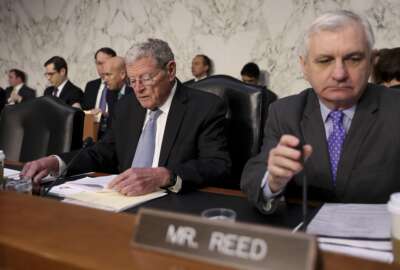

The Army’s Futures Command is officially up and running in Austin, and while the command promises to completely reform the service’s equipping practices, it’s...
The Army’s Futures Command is officially up and running in Austin, and while the command promises to completely reform the service’s equipping practices, it’s also spurring change in the personnel realm.
“I’ve talked a lot about how we’re changing our industrial age acquisition processes. We are also in the process of changing our personnel management systems and I would argue that we also have an industrial age personnel management system,” said Gen. James McConville, the Army vice chief of staff, on Tuesday during a conference in Washington.
Changing that system involves leveraging the skills of soldiers that the Army is unaware of or is not cultivating.
“We are going to need people with the right talents. The knowledge, the skills and attributes that’s going to allow them to operate in these type of areas, so we are going to need to know more about them,” McConville said.
Army Secretary Mark Esper echoed McConville’s comments during a Friday press conference in Austin.
“We are taking a holistic look at how we do everything with regards to how do we assign folks, how do we pick them, how do we bring them into the military, how do we train and educate them, personnel assignments, how do we manage those? Can we reduce the permanent change of station rotation churn? All those things are on the table. [Futures Command leader] Gen. [John] Murray has ideas, the chief [of staff] certainly has a lot of ideas and we have a task force right now that is pulling all that together,” he said.
The task force is the Talent Management Task Force, which has been in effect since 2016.
Right now, the Army groups soldiers based on only two basic variables: they are given a rank and a specialty, for example a captain of logistics.
McConville says that’s not the right way to go forward in learning about the soldiers in the force.
“In the future, what we see is we will manage people by maybe 25 different attributes. You’ve got this language skill, you’ve got this type of degree, you’ve got this type of combat tour, you have this type of cognitive and noncognitive skills. And this is kind of blasphemous in the Army. We may even manage you by where you want to go and what you want to do,” McConville said.
While the change in broader talent management may help the Army leverage skills and place soldiers in specialties more conducive to their talents, the Army’s new tactics on personnel will also change the way it approaches its acquisition staff.
McConville said the Army wants program managers to stick with their programs as they move up in rank.
“You may start managing this program as a colonel. If you do really well, you’re going to finish managing maybe as a two-star general,” McConville said. “People in critical positions, they are going to stay in these positions, and they are going to work their way through as they go forward.
McConville said the plan is to identify people early on with the right skill sets to lead programs and send them to school and to work in industry.
The Army is also going to start looking into the reserves to find people it needs to fill important positions.
“We may not [currently] know that the one-star general who we’re talking to is a logistician in the reserves, but in his civilian job he’s got a Ph.D. in computer science with an artificial intelligence background. So we may not use him as a logistician,” McConville said.
The Army’s new approach to personnel as the Futures Command sets up is part of a larger push to change the talent management system in the military.
Former Defense Secretary Ash Carter started the Force of the Future, which increased daycare hours and maternity leave in order to attract and retain more talented service members.
Additionally, in the most recent defense authorization act, Congress makes some of the biggest personnel changes since the 1980s in hopes of putting the best people in the best positions.
The law pushes more promotion decisions down to the services to create alternative paths and timelines for officers to move up in the ranks.
“Our approach to [the Defense Officer Personnel Management Act (DOPMA)] was granting the service secretaries more flexibility to the service secretaries to shape their promotion timeline in a way that’s most effective for their service. The committee didn’t feel that the Air Force promotion system didn’t necessarily need to resemble the Marine Corps promotion system,” a Senate Armed Services Committee staffer said on background in May.
The NDAA also gives services the ability to change the promotion timeline for certain occupations.
This is something the Air Force is particularly interested in for pilots. As the service is struggling to keep pilots in the service, it found many pilots are not interested in the up-or-out system. They would rather just fly and not worry about meeting goals to become a general one day.
The law also would expand officer spot promotions up to the colonel level. This would allow the service to give a lower ranking officer a higher rank on-the-spot if he or she takes a high demand or challenging job.
Finally, the NDAA repeals age restrictions on how old someone must be to reach a certain rank.
Copyright © 2025 Federal News Network. All rights reserved. This website is not intended for users located within the European Economic Area.
Scott Maucione is a defense reporter for Federal News Network and reports on human capital, workforce and the Defense Department at-large.
Follow @smaucioneWFED

